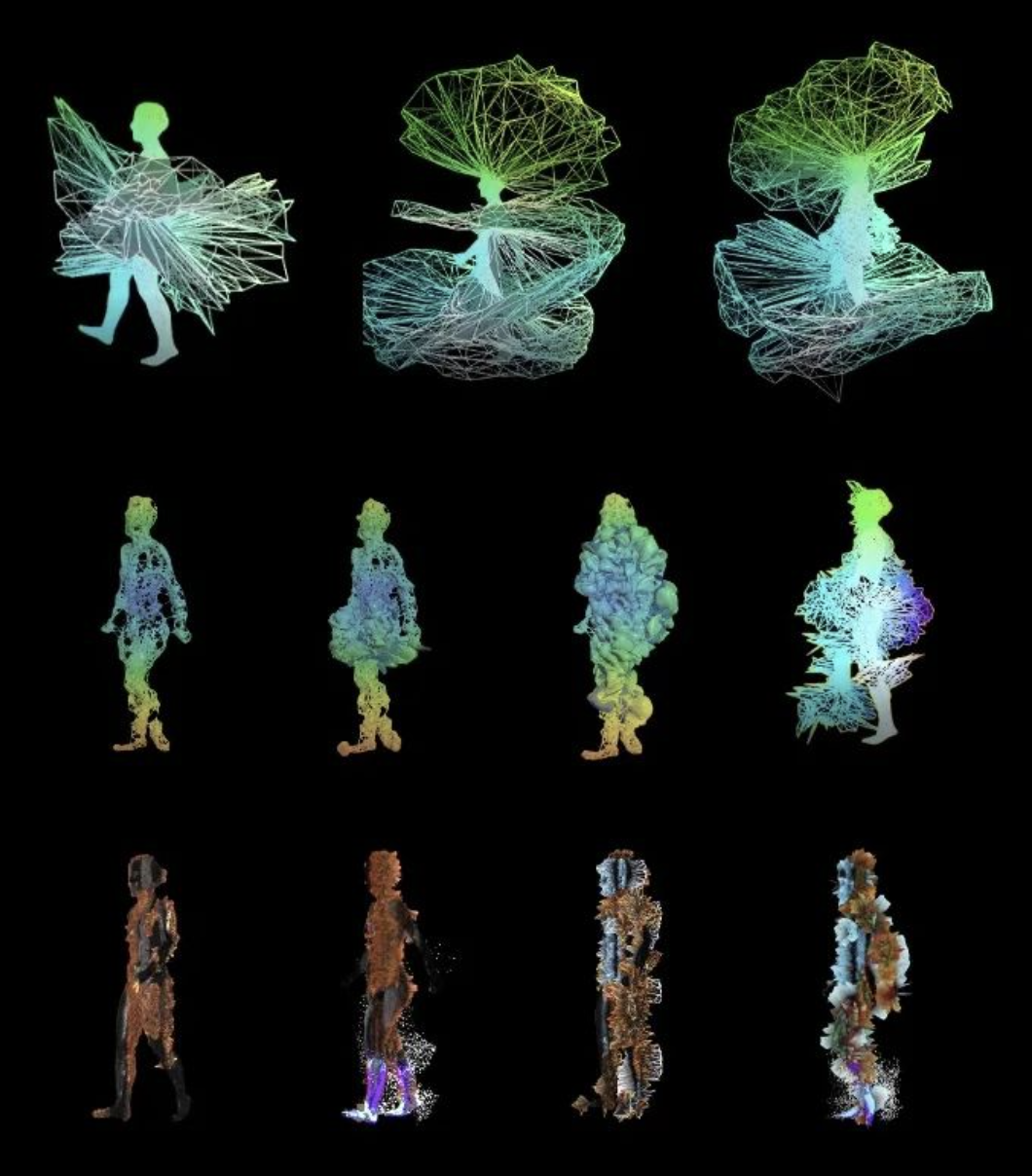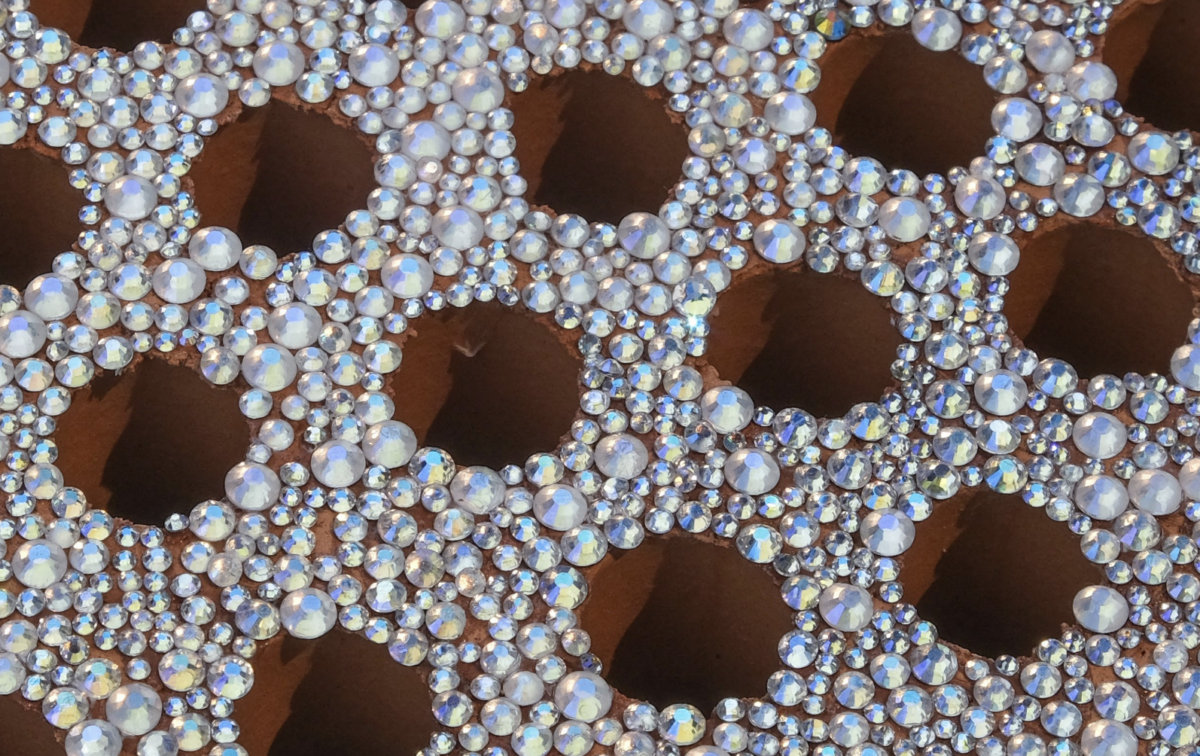Like any other source of inspiration, nature has long been that ever-present muse for creativity, and innovation. From rivers to mountains, tree leaves to mycelium, human beings have continuously been drawn to it, fascinated by its structure and even its mysteries. As societies became more sophisticated and layered into knots of complex civil organizations, conventions, boundaries, and laws, people infiltrated every corner of planet Earth. Through people’s attempts to regulate and manipulate the world, the natural unfolding environmental phenomena have lost their enchantment. The Anthropocene irreversibly bent the world in its own favor, dividing the world into a binary structure what is human on one side, and non-human on the other. The fluidity between entities was repressed, especially in westernized modern society. But what would happen if we dove back into the myths of mutability and interconnectedness? What would happen if we challenged our human-centered referential system? What could we learn by exploring a beyond-the-human world? What if we could delve back into what is the natural, rediscover its sacredness, and embrace its evil?
Multimedia artists like Yiou Wang and Meichun Cai have taken this as their artistic quest, and are using technology to explore more-than-human identities. Born and raised in China, but having mainly lived in the West, they are cases of – one could say – culturally fluid personas. Perhaps the artists’ fascination with abnormal realms came precisely from these multiple identities, alongside their interest in digital mediums. I will describe more about their work later in the article.
Fluid identities
Identity is a complicated word, composed of different layers of representation and classification. The points of view to tackle the concept of identity are so numerous that even today when we speak, for example, about gender identity, we still cannot generally agree on what a woman, or a man, actually is. Other layers include spiritual identities or national identities, which come with traditions and cultures. Nonetheless, history has long been populated by creatures that go beyond these schemes and embrace a beyond-human, sacred way of knowing.

1. Fènghuáng (鳳凰) – A nine-headed phoenix
2. Yinglong (應龍) – A winged dragon and rain deity

“Unlike some belief systems, Christianity for example, where the holy is something high above, shapeshifters, gods, and other supernatural deities live closely on the land and are tied to the land. As a person who really loves nature, art, and culture, I found a conjunction of the latter in these creatures which define boundaries. Their sacredness is a representation of the intrinsic nature of the human being,” states Yiou. Identifying the sacred as an inherent part of a culture and nature rather than something to strive for higher above can completely change our perception of self as humans. For example, shamanic cultures like Yanomami tribes saw “hybrid creatures between humans and animals as their ancestors, thus having a consanguinity, a kinship with the supernatural.” ¹

It is also no surprise to notice how many deities or shapeshifters are usually represented as women, or at least with more feminine features, considering these qualities as being closer to nurture, birth, and cultivation. So, what is the point of all these gods and hybrid creatures? Well, in spite of the imminent threat of these myths disappearing from the public consciousness, we can learn the critical principles these belief systems carry behind their narratives. Deities that disrupt common boundaries but can still embody a human form can inspire us to understand that we too, somehow, should strive to go beyond our own perception and shift our anthropologic-centered referential system to one that is more universal and connected to nature.
The advantages of moving outside our human perspective, therefore decentralizing humanity, implicate embracing a wider range of morality and tolerance. Shapeshifters, which are a symbiosis between nature and humans, have endlessly shown this to us: they are neither good nor evil, and what they do is simply practice their powers. This concept though has been lost in modern thought, as these creators became linked with the connotation of beasts or monsters. As Yiou wonderfully stated, “when people think of hybrid beings they often equate them to monsters, but what sets mythological shapeshifters apart is their ability to cross boundaries in fluidity. Monsters exhibit static hybridity as a result of external forces, often like a curse, whose hybridity is perceived as unnatural.”
Technology is the new enchantment
Well, how do we reach beyond-human experiences? Luckily, today we are equipped with something we didn’t have a short time ago: technology. CGI, motion caption systems, extended realities, and AI are only a few of the tools that humans have created and can be used for making more connections between each other and beyond. As we dive into the potential of technology, Meichun discusses the advantages of what can appear to be a challenge to our own potential, like Artificial Intelligence. She states that “even if AI can highly mimic human power, it must be seen as a tool for creative research to help us reach broader understandings. It should be a co-creation for boundary spanning.” Both Meichun and Yiou, always fascinated by culture, the natural world, and tech, have long been working on various projects that tackle augmented realities using digital tools, one of them being Mixanthropy.

This project, turned into an independent venture, was named after Emma Aston’s book about animal-human hybrid deities in Greek religion. Motion-capturing technology was the core tool the two artists used to create the movements of their own mythical shifting creatures, requiring them to change seats from creators to actors, from homo sapiens to animals, immersing themselves into a deity’s fluidity. “We are accustomed to being behind the scenes, but this time we had to be performers ourselves. While acting I understood the power of this technology as it breaks the walls between the visual arts, installation, and performance,” claims Yiou. To complete the morphing bodies based on the artists’ moments, mimetic skin textures constituting various AI-generated environmental landscapes were added. The illusion of a never-ending cycle from the divine to the terrestrial seems therefore a never-ending flow, bringing the observers closer to the realm of temporal and spatial fluidity. The work will be presented at the SXSW Art Festival from March 10th to the 17th in Austin, Texas, alongside other projects that revolve around tech, film, music, education, and culture.

Mixanthropy can be seen not just as an ongoing project alone, but as an approach, a method of multiple outcomes and properties, that can vary in technique and interpretation and holds no judgment onto hybridity. “Our focus is crossing the boundary, going beyond biases and borders and we do not adhere to one single conclusion,” explains Meichun. In fact, outside biases, illusions, and boundaries we may understand that the differences found among nonhumans animals and humans (mixanthropes), can be seen more as intriguing qualities for exchange and growth, rather than constraints or divergences. It is a chance to draw nearer to our intrinsic values and our origins, the untamed animal that we embody. By shifting away from the monstrous and the hideous, Meichund and Yiou, therefore, invite the observers to experience a new aestheticization of the concept of fluidity, showing us a more elegant, modern and beautiful representation of the (un)natural. And perhaps, making us understand that we are a little more other-worldly than what we ought to believe.

ABOUT THE ARTISTS
Yiou Wang is an experimental multimedia artist and multidisciplinary 3D designer from Harvard Graduate School of Design who explores nonhuman agency, mind-body relations, sleep, and maze spaces through the lens of mythology and technology. With backgrounds in architecture and various arts, Yiou works in a polymathic breadth from game and immersive storytelling, to motion capture animation, XR, AI, installation, and most recently, performance. She has worked or exhibited in the U.S., China, Denmark, and Canada.
Meichun Cai is a research-based designer and multimedia artist working across interactive technology, installations, and mixed realities. Through a posthumanist lens, she explores new paradigms between art, biology, and machine, and experiments with immersive storytelling, cognitive augmentation, and other-than-human world futures. Her professional practice ranges from building next-generation platforms for democratizing 3D content creation to designing multi-modal interfaces with emotional AI. Meichun graduated from Harvard with a master’s degree in Design Technology.
ABOUT THE AUTHOR
Ardennes Ornati is a designer, writer, and creator. She is the founding editor and member of Young Visions, a non-profit collective for artists. She is currently working as a strategic designer at Design For Human Nature and studying at the University of Arts in Zurich.
Sources:
- Davi Kopenawa, Falling Sky: Words of a Yanomami Shaman, 2013
Images:
- Courtesy: World Digital Library
- Courtesy: World Digital Library
- Courtesy: Hakoiri musume menya ningyō
- Meichun Mai, Yiou Wang
- Meichun Mai, Yiou Wang




